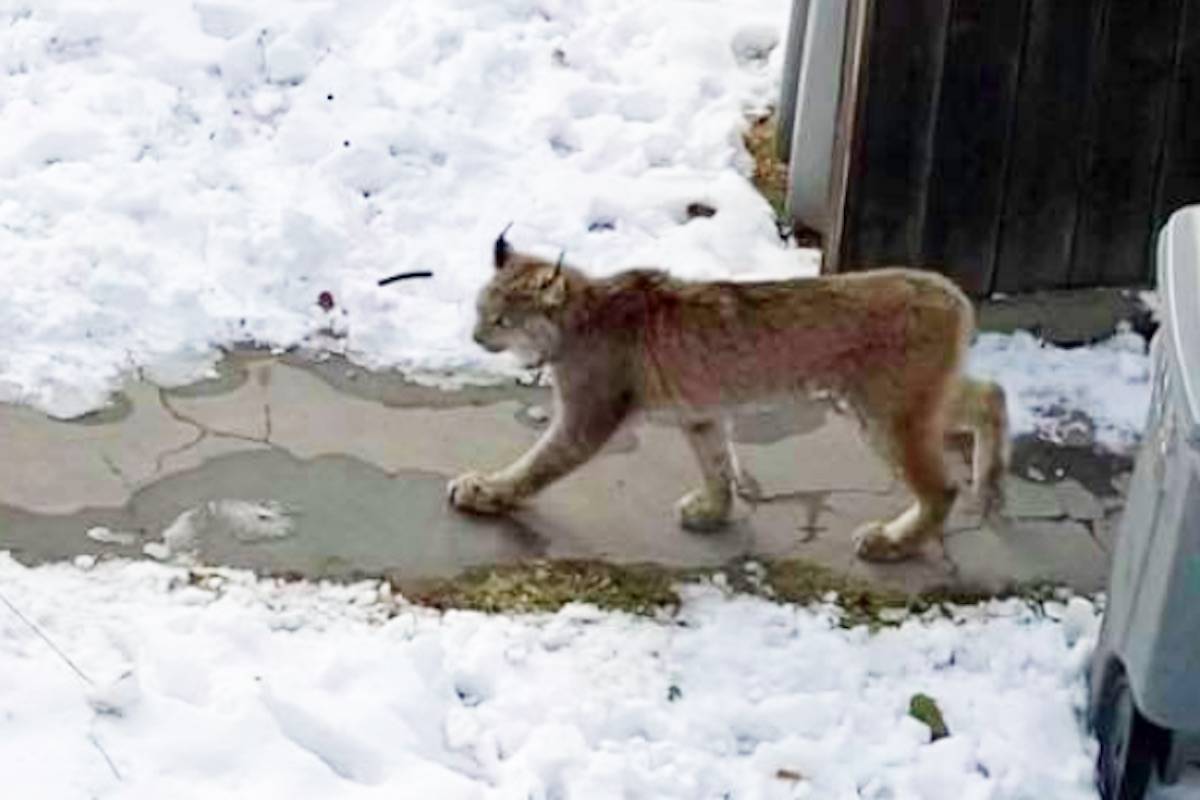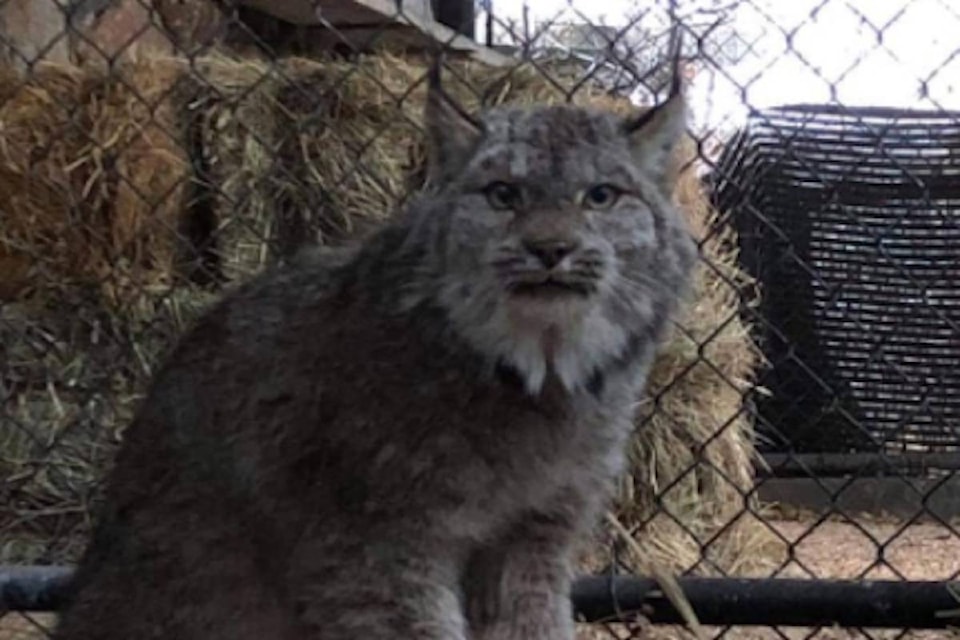A lynx that wandered around North Kamloops earlier this week is now in the care of the BC Wildlife Park’s rehabilitation centre.
The Conservation Officer Service captured the male lynx that was exhibiting abnormal behaviour in the urban area and brought it to the wildlife park’s health centre for assessment.
While the lynx’s outward appearance was deemed normal, a full physical examination revealed it had an abdominal infection. The cause of the infection is unknown and the wildlife park is awaiting the results of diagnostic testing.
The lynx is resting at the centre and on antibiotics.
“It is fortunate that the BC Conservation Officer Service was able to safely capture and bring the lynx to us. Without their support, it is likely that he would have succumbed to this infection,” a post on the park’s Facebook page stated. “Our rehabilitation team will do everything they can to treat his infection and are hopeful he will pull through.”
Animal care manager Tracy Reynolds confirmed the lynx is the same wildcat that was spotted wandering North Kamloops in broad daylight on Sunday, Oct. 25.
The cat was spotted on Sherwood Drive and Willow Street. Initially, the Conservation Officer Service (COS) believed it to be a bobcat, though Reynolds can confirm it is, in fact, a lynx.
Conservation told KTW it was going to allow the lynx to move along, but, Reynolds said, by Tuesday, with reports of the animal still uncharacteristically lingering in the area, the decision was made to capture the cat and bring it to the wildlife park.
The lynx was not a public safety concern; however, it was exhibiting unusual behaviour, as lynx are reclusive animals and normally avoid humans and populated areas, according to the COS.

Reynolds said conservation captured the animal around the Tranquille Road area of the North Shore using a noose capture pole and brought it to the health centre that evening, where it was examined by a vet.
“They probably wouldn’t have been able to trap it very easily because he was very full,” Reynolds said, noting there were reports the lynx had been seen eating feral cats.
The lynx wasn’t acting like itself by hanging around an urban area in plain sight during the day, Reynolds said.
“Lynx aren’t really found in habited areas. They’re quite seclusive and reclusive — they will hide,” she said.
Reynolds said the lynx has some fluid built up in his abdomen and she hopes the testing can reveal more about the animal’s condition, noting the infection could be from disease or trauma.
“He’s not healthy,” Reynolds said.
If the cat recovers and is deemed healthy, he will be released back into the wild.
She said the lynx is estimated to be between two and six years of age, judging by his teeth. Lynx in the wild can live for 10 to 12 years.
Reynolds said there are many ways to tell a lynx apart from a bobcat — lynx have fully black-tipped tails, longer ear tuffs, longer legs and are usually larger than bobcats.
What’s unusual about this cat’s North Kamloops stroll is that lynx are typically found at higher elevations in the Kamloops area, such as Red Lake. Bobcats are more prevalent at lower elevations.
READ MORE: Hammy 2.0? Prince Rupert deer spotted with bright pink yoga ball stuck in antlers
READ MORE: Bear sightings reported from Summerland neighbourhood
Like us on Facebook and follow us on Twitter.